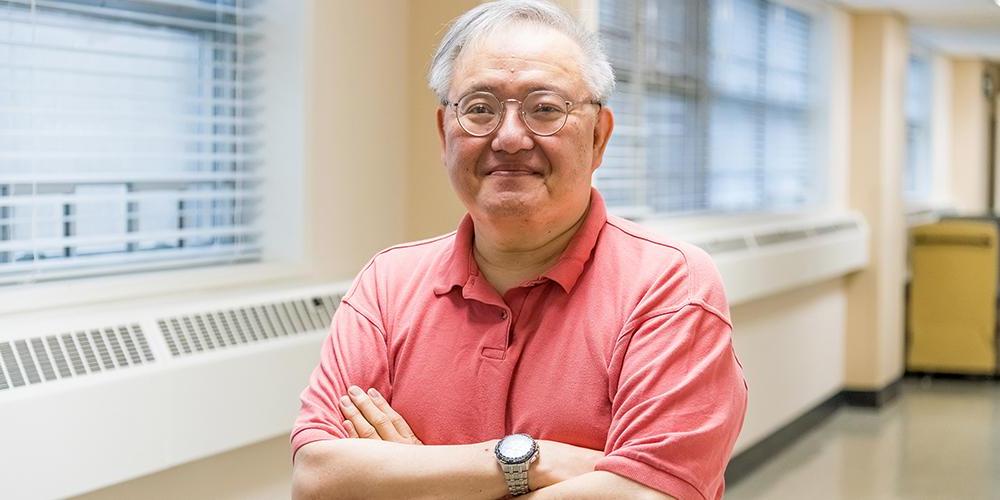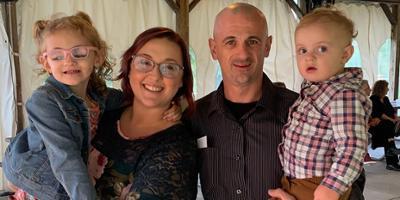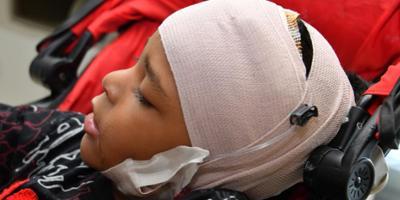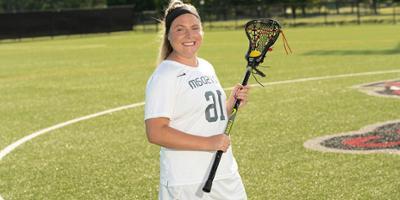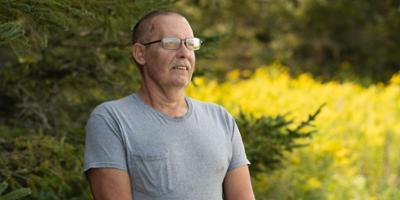After his stroke: rehabilitation, a vegan diet and genetic testing
His recovery includes stroke prevention
BY AMBER SMITH
Peter Wong was in his early 50s when he had his first stroke. Today, he says, “I remind myself over and over again how lucky I am to be on this side of the earth.”
Through a lengthy journey back to health, Wong has been helped by several experts at Upstate Medical University, including physical therapists, a doctor who oversaw important dietary changes and another who streamlined his prescriptions.
Wong, 60, of Liverpool, loved his job and spent many hours of his life at Syracuse’s Hancock International Airport, where he worked, usually arriving a half-hour early for a shift that started at 4 a.m. He worked for an airline, directing planes into terminals, ticketing passengers, collecting baggage and various other tasks.
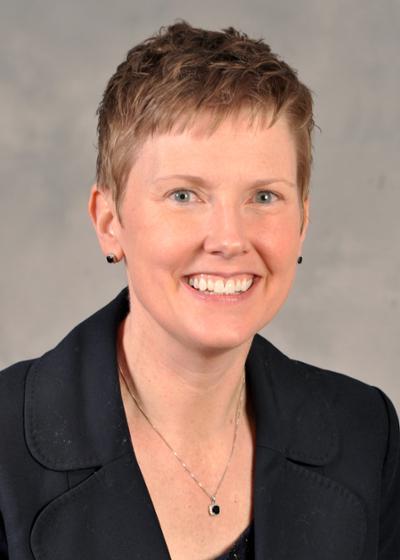 Karen Albright, DO, PhD
Karen Albright, DO, PhDOne morning in October 2014, just after the last of the passengers were checked in, Wong suddenly leaned against the wall. His words became garbled. His body slid down the wall until he sat on the baggage conveyor belt.
Co-workers helped him into the break room and periodically checked on him. “I wasn’t getting any better. In fact, I was getting worse. So, they got worried.” They called 911. Paramedics wanted to bring him to the hospital emergency department. Wong resisted.
Finally, he agreed to let a co-worker drive him home. She instead drove him to the hospital.
“I got admitted immediately,” Wong remembers. “They found two ischemic strokes had occurred in the pons area of my brain. And they determined it was too late for the medication to break up the strokes.”
At the time, Wong didn’t know anything about the warning signs of stroke or the damage that can result. He soon learned.
An ischemic stroke occurs when a clot blocks blood flow in an artery in the brain. The pons area is the largest part of the brain stem, where information is relayed about motor function and sensation, eye movement, hearing, taste and more. Medication can be used to help break up clots that are causing strokes, but only if it is administered quickly. (Click here to learn the warning signs of stroke.)
Wong was hospitalized for a week. He was anxious to return to work and feeling better. But the day he was to be discharged, he suffered a third stroke. This one was debilitating. Wong couldn’t swallow, he couldn’t see, and he couldn’t move his left side.
Several weeks later, he was transferred into the department of physical medicine and rehabilitation program at Upstate Medical University. He still struggled physically. “My cognitive, intelligent self was trapped in a world it didn’t want to be in. It was difficult, very difficult, to deal with,” Wong recalls. The therapists and doctors and nurses from rehabilitation “took super care of me. They had to help me through some really, really difficult times. I would spend hours just crying and crying. I felt hopeless. They understood, and they steered me through that.”
He remembers a special “carnival day” that his physical therapist insisted he attend. She wheeled him outside, where food and games were set up, and together they visited every vendor. Wong threw darts and tossed bean bags and came away with a stuffed prize, feeling as if he had won an Olympic medal. “To this day, I have that multicolored fuzzy caterpillar. It stays on my bed. That carnival had a major impact on me. It was unbelievable how much it helped. I applaud these people who help you put your life back together. They give you hope.”
For two months at Upstate and another six months after he was discharged, Wong worked to regain the ability to swallow, and to stand and, eventually, to walk. His goal was to return to work, and he did for a brief time. He continued having transient ischemic attacks, small strokes known as TIAs. He would stumble and injure himself falling. Or he would have a seizure. In four years, he made seven trips to the hospital emergency room. Wong soon realized he would have to go on medical disability.
One of his doctors tried to break his cycle of strokes with a vegan diet. So Wong eliminated animal fat from his diet for an entire year. He says it was torture, but it helped improve his blood pressure. The doctor later allowed that he could have one egg per week, and some yogurt. During a follow-up appointment, Wong’s doctor told him about neurologist Karen Albright, DO, PhD, who had recently joined Upstate. She specialized in pharmacogenetics, how an individual’s genetic makeup affects his or her response to medications.
Wong got an appointment with Albright at the department of neurology’s pharmacogenomics clinic.
Albright told him of an unusual tendency for people from specific regions of Asia to have a genetic variant that could disrupt the metabolism of certain medications including clopidogrel, the blood thinner he was taking to reduce his risk of stroke by inhibiting platelets in his blood. Wong was born in Hong Kong and came to New York City as a preschooler. He was willing to have blood drawn for a genetic test that would reveal how his body was handling the medications he was taking.
Clopidogrel is a prodrug, meaning the body has to convert it after administration. “First, it has to get absorbed,” Albright explains. “Then you have to activate this drug. If you have a genetic variant that makes you a poor metabolizer, you can’t activate the drug enough to adequately inhibit platelets.”
Wong learned that he had a genetic variant that was not allowing his body to fully activate clopidogrel.
Albright discontinued his clopidogrel and replaced it with an alternative antiplatelet medication. Wong has not required emergency medical care since.
“I have not had a TIA or stroke since. It’s unbelievable,” Wong says. “She is amazing.”
Can the pharmacogenomics clinic help you?
– Are you taking a medication that is not working?
– Have you had bad side effects from a medication?
– Are you taking multiple medications?
– Do you have a family history of adverse drug reactions?
These are some of the reasons people seek help from specialists who understand how genes relate to various medications.
 Danielle DelVecchio, PharmD
Danielle DelVecchio, PharmDPatients at the pharmacogenomics clinic (PGx, for short), in Upstate’s department of neurology, meet first with a pharmacist and doctor or nurse practitioner to provide a detailed medication history. Pharmacist Danielle DelVecchio says strong evidence does not exist for all medications. But if patients may benefit, genetic testing is offered. (For a podcast where Albright and DelVecchio further explain the role of genetics and medications, click here.)
“Our PGx clinic focuses on genes with a high level of evidence,” Karen Albright, DO, PhD, explains.
“We often tell patients we are not 23 and Me. We cannot predict what diseases you may get in the future. We are not Ancestry.com. We can’t tell you who you are or aren’t related to. We are focused on genes that relate to drugs. We look at genotypes of specific genes that groups like PharmGKB or the Clinical Pharmacogenetics Implementation Consortium have said have a high level of evidence. These groups issue guidelines for clinicians about what they should do with genetic information.”
The federal Food and Drug Administration provides a table of pharmacogenomic biomarkers in drug labeling and says “pharmacogenomics can play an important role in identifying responders and nonresponders to medications, avoiding adverse events and optimizing drug dose.”
Health care providers can refer patients to Upstate’s pharmacogenomics clinic by calling 315-464-4243
This article appears in the spring 2023 issue of Upstate Health magazine.

